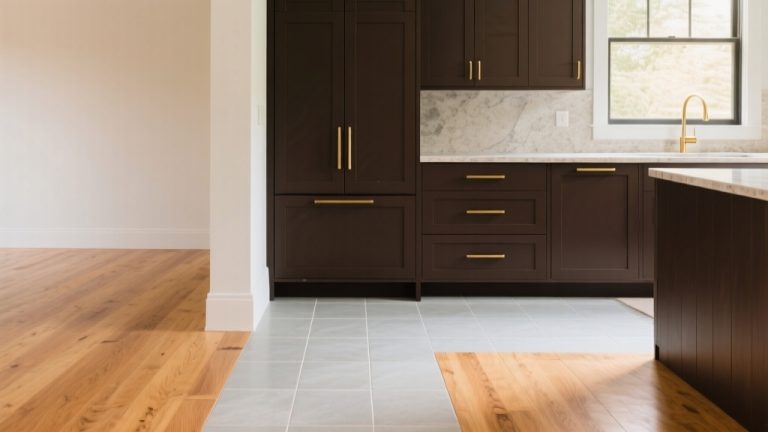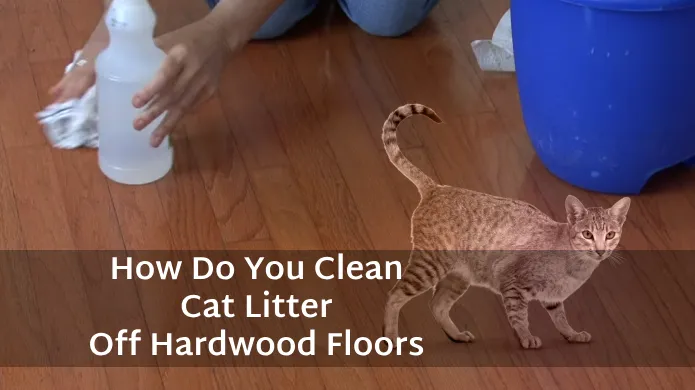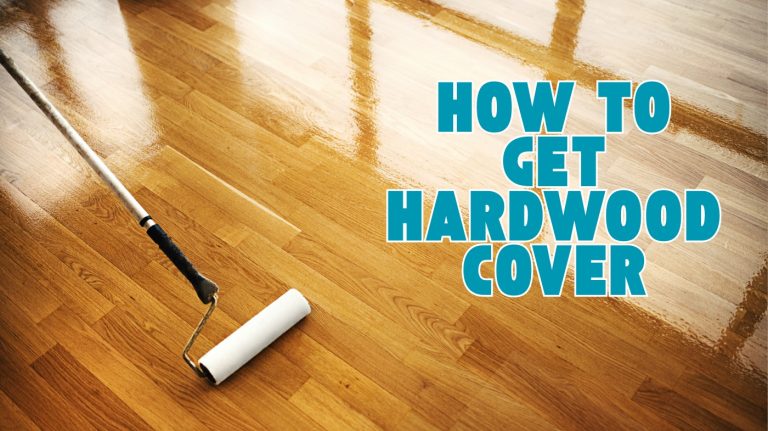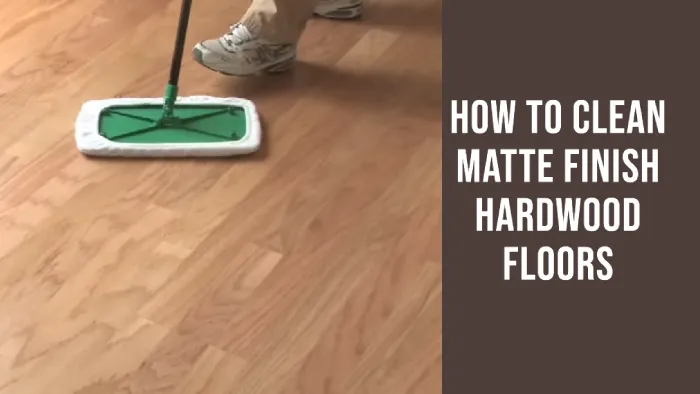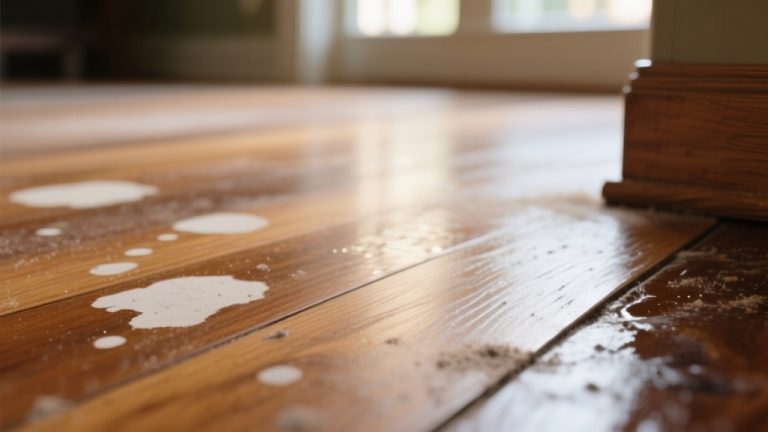How to Clean Laundry Detergent Spill on Hardwood Floors: [Easy DIY]
Spilled laundry detergent on hardwood floors can be a nightmare to clean up. It poses a safety hazard and leaves behind a sticky mess that seems impossible to remove. But there is a way to effectively clean up this mess without damaging your precious flooring.
To clean laundry detergent spills on hardwood floors, it’s important to take a delicate approach that involves removing the excess detergent, preparing a vinegar solution, and mopping the floor with the solution. With these steps, you can effectively clean up any spills and leave your floors sparkling clean.
This piece of writing expertly explores the most effective techniques for eliminating spilled laundry detergent from hardwood floors.
How to Clean Laundry Detergent Spill On Hardwood Floors: Steps to Follow
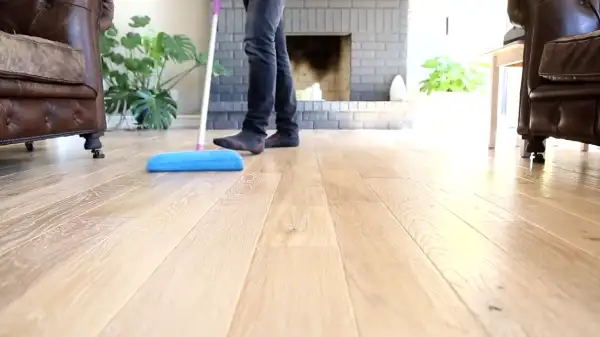
When faced with a laundry detergent spill on hardwood floors, there are several steps to take for effective cleaning.
Step 1: Removing Excess Detergent
The first step in restoring a hardwood floor affected by a laundry detergent spill is removing the excess detergent. This process involves using a soft dry cloth to gently absorb and lift the excess substance present on the floor surface. Be careful not to rub the cloth vigorously, which may spread the detergent or residue.
Step 2: Preparing the Vinegar Solution
To prepare a solution for restoring a surface affected by a substance, measure ¼ cup of white or apple vinegar and combine it with one gallon of warm water in a large container. The vinegar solution effectively breaks down and removes the detergent residue on hardwood floors.
Once the vinegar solution is made, it must be stirred gently to ensure that the vinegar and water are well-mixed. The solution should be used immediately after it is prepared to avoid any loss of effectiveness.
Step 3: Mopping the Floor with the Vinegar Solution
By using a damp cloth dipped in vinegar, you can effectively restore the floor surface by mopping it in sections and concentrating on stubborn stains and dirt. The vinegar solution acts as a natural cleaning agent that helps to remove dirt and grime from the surface of the hardwood floors.
When mopping the floor, it is important to ensure that the cloth is damp but not dripping, as excess water can cause damage to the hardwood. For areas with stubborn stains or dirt, applying slightly more pressure or focusing on additional cleaning time can help to remove the dirt effectively.
If necessary, it is also important to work in sections to ensure that all hardwood floor areas are cleaned thoroughly.
Step 4: Rinsing with Plain Water
Rinsing the floor with plain water after mopping it with vinegar is crucial to remove any remaining residue. When vinegar is used to clean hardwood floors, it can leave behind an unpleasant odor if not rinsed properly. Rinsing with plain water helps to eliminate this issue and provides a refreshing scent.
Once the floor has been rinsed, allow it to air dry naturally, or pat it dry with a clean cloth. This step is essential to achieving a clean and polished look for your hardwood floors.
Alternative Cleaning Methods for Dried Spilled Laundry Detergent
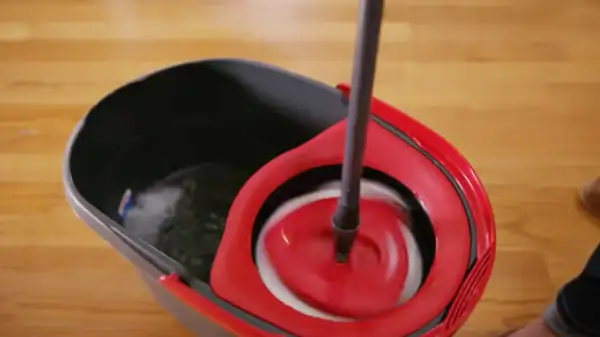
There exist numerous alternative approaches for eliminating spilled laundry detergent. As well as the method mentioned, these can be used to absorb and counteract the dry detergent buildup on hardwood floors.
Method 1: Using Kitty Litter
This procedure requires no additional materials other than kitty litter, which may already be available in some homes.
You Will Need:
- Scraper
- Kitty litter
- Salt
- Soft cloths
- Paper towels
- Bucket
- Water
- Mop
- Dustpan
Step One: Scrape Off Detergent
Removing excess dried residue is the first crucial step in restoring the integrity of the affected surface. When dealing with a hardwood stained with laundry detergent, use a plastic scraper to gently remove as much dried detergent as possible from the floor surface.
To avoid causing any additional damage to the hardwood floor, apply gentle pressure while scraping it.
Step Two: Apply Cooking Oil to Freshen the Detergent
A small amount of cooking oil should be gently rubbed over the affected surface to prepare the remaining dried residue for treatment. This step freshens the detergent and makes it easier to clean up. The oil acts as a lubricant, loosening the detergent from the hardwood floor.
When applying the cooking oil, it is important to use a small amount and rub it gently. Too much pressure or oil can damage the floor.
Step Three: Absorb the Detergent Spill
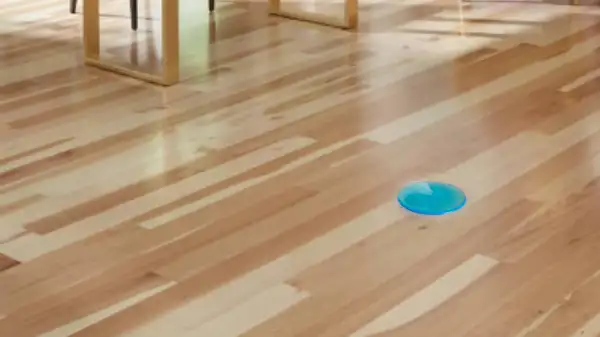
Spills in the home must be dealt with swiftly to prevent damage to household surfaces. Absorbent materials like kitty litter or salt can be used to soak up excess moisture from a spilled laundry detergent.
Depending on the liquid depth and the material’s absorbency, the absorption process can take minutes to hours. After covering the spill with the absorbent material, leave it for an adequate amount of time before wiping it up with a dustpan and paper towels.
Remove all excess moisture to prevent further damage to the hardwood floors. To avoid spreading it, it’s essential to proceed cautiously when cleaning the remaining detergent residue.
Step Four: Remove the Remaining Film
Now that the spill has been absorbed, it’s time to tackle the remaining film on the surface. Fill a bucket with plain water and focus on removing the suds that the detergent caused. It’s important to remember that detergent is highly concentrated, leading to increased suds whenever water is added.
To effectively remove the remaining detergent, plain water must dilute it. Pour the plain water onto the affected area and gently scrub the surface with a clean mop. Rinse the mop frequently with plain water to avoid spreading the detergent film around the floor.
Step Five: Mop the Floor to Clean Remaining Detergent
Now that you’ve removed the dried detergent film from the hardwood floor, it’s time to mop the area to remove any leftover residue. This step is essential in ensuring the floor is entirely detergent-free, which could cause slipperiness or wood damage.
Start by dipping a mop in a plain water bucket and use it to clean any remaining detergent on the floor. It’s essential to rinse the mop regularly and replace the water if it becomes too dirty or soapy to ensure efficient removal of the detergent.
After mopping the floor, it’s important to dry it thoroughly with a soft cloth. This prevents potential damage to the wood by removing all excess moisture from the surface. Avoid using heat sources such as hair dryers or heaters, as they can cause the wood to dry out too quickly, leading to cracking and splitting.
At last, inspect the floor for any remaining residue or stickiness. If any residue is present, repeat the mopping process.
Method 2: Using hydrogen peroxide

The hydrogen peroxide can help break down the detergent residue and remove it from hardwood. Here’s how to do it:
Step 1: Remove Excess Detergent
Before applying any cleaning solution, removing excess detergent from the spill is essential. A wet nozzle vacuum cleaner will help suction any leftover detergent to prevent it from spreading. This will make the cleaning process easier and more efficient.
Step 2: Soak a Cloth with Hydrogen Peroxide
Hydrogen peroxide is a mild cleaning agent that can help dissolve detergent residue. Soaking a clean cloth in hydrogen peroxide and ensuring it is saturated will help in this process. Furthermore, hydrogen peroxide is safe for use on hardwood surfaces.
Step 3: Lay the Hydrogen Peroxide-Soaked Cloth Over the Spill
After soaking the cloth in hydrogen peroxide, place it over the detergent spill and ensure it covers the affected area. The cloth should be left in place for at least an hour to allow it to absorb the detergent residue. During this time, the hydrogen peroxide will break down the spill.
Step 4: Dampen the Cloth with Warm Water and Wipe the Area
Once the hydrogen peroxide has had time to work, dampen a clean cloth with warm water and gently wipe the spill area. This will remove any remaining detergent residue and hydrogen peroxide from the hardwood. To prevent excessive moisture from damaging the hardwood, wring out the cloth.
Step 5: Repeat the Process if Necessary
In some cases, there may still be traces of detergent residue after wiping the spill area. If this occurs, it is necessary to repeat the process. Soak the cloth in hydrogen peroxide again, lay it over the spill, allow it to stand for an hour, and then wipe the area with a damp cloth.
Repeat this process until the detergent spill is completely removed.
What’s the Deal With Cleaning up Laundry Detergent Spills on Hardwood?
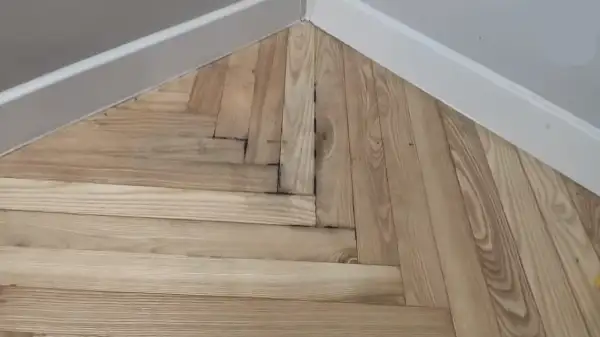
Failing to address laundry detergent spills on hardwood floors could result in grave outcomes. Below are some of the potential hazards:
1: Effect on Hardwood Floors
The erosion of a protective finish and natural shine of wooden surfaces is common over time, especially when exposed to certain chemicals. Laundry detergents are one such chemical that can cause harm to hardwood floors. Spilled detergent can stain, discolor, and even damage the wood if it seeps in.
The consequences of a detergent spill can be devastating to the appearance and longevity of hardwood floors, making it crucial to address the issue promptly.
2: Moisture Damage
Moisture damage poses a significant risk to the structural integrity of wooden surfaces and can lead to warping, swelling, and rotting over time. When liquid laundry detergents are spilled on hardwood floors, the moisture can seep into the wood fibers and cause swelling, warping, or buckling.
This results in irreversible damage to the flooring and can be costly to repair. Cleaning spills promptly prevents moisture from penetrating the wood fibers and causing structural damage.
3: Safety Hazard
Slippery surfaces caused by soap residue on wooden floors pose a safety hazard that can be prevented through timely cleaning and regular maintenance. When laundry detergent spills on hardwood floors, it can create a slippery surface, increasing the risk of slips and falls.
This risk is particularly high in areas with heavy foot traffic, such as hallways and kitchens. This can result in accidents, particularly for young children and elderly individuals who are more susceptible to falls.
Removing laundry detergent spills immediately is important to avoid this safety hazard.
Is it Necessary to Dilute the Laundry Detergent Before Cleaning?

To avoid damaging delicate surfaces when cleaning with laundry detergent, it is advisable to dilute it before use. Hardwood floors are particularly vulnerable to damage caused by high detergent concentrations, so diluting it with water can reduce that risk.
Dilution ratios may vary depending on the detergent used, so always read the label to determine the appropriate ratio. As a general guideline, one cup of detergent per gallon of water is a good starting point. By diluting the detergent, its concentration is reduced, and hardwood flooring is made safer.
But, even with proper dilution, it is still essential to look out for any signs of damage or discoloration. It is always advisable to dilute laundry detergent when cleaning delicate surfaces to minimize the risk of floor damage.
Can Laundry Detergent Spills on Hardwood Floors Cause Damage?
Laundry detergent spills on hardwood floors can cause damage. The detergent contains chemicals that can corrode the floor’s buffers and result in irreversible harm. Porous surfaces like wood or tile are more susceptible to damage.
If left unattended, the spilled detergent can seep into the pores of the wood, leading to discoloration and warping over time. To minimize potential damage, cleaning up any spills immediately is crucial.
Whenever using chemicals on floors, homeowners should be aware of the potential risks of certain chemicals. Therefore, it’s best to be careful and avoid any spills on hardwood floors.
What PH Level Should Laundry Detergents have to Avoid Damaging Hardwood Dloors?
Maintaining a balanced pH level in cleaning solutions is crucial for preventing the harmful effects of corrosive chemicals on natural wood surfaces. To avoid damaging hardwood floors, choose a detergent whose pH is around 7 is recommended, which is neither too alkaline nor too acidic.
Laundry detergents with a high pH level can break down the protective coating on the wood, making it more susceptible to scratches, discoloration, and other forms of damage. Conversely, detergents with a low pH level can dry out and cause hardwood floors to lose their natural shine.
It is essential to use a laundry detergent with a balanced pH level to ensure the beauty and integrity of hardwood floors for many years to come. Adopting the proper cleaning technique, such as wiping spills immediately and avoiding abrasive materials, is also important.
Swiftly Tackle Laundry Detergent Spills On Hardwood Floors
Spots of laundry detergent on hardwood floors require prompt action to prevent potential damage. One effective method is to immediately soak up as much of the spill as possible with a clean cloth and then wipe the affected area with warm water and vinegar solution.
Choosing a laundry detergent with a pH level that’s safe for the flooring is essential, but dilution is unnecessary. Different cleaning methods, including commercial hardwood floor cleaners or a baking soda and water mixture, are also available.
Before applying any cleaning solution, always test it on a small, inconspicuous flooring area to ensure it won’t cause damage. Maintaining hardwood floors’ integrity and longevity requires proactive measures and prompt spill cleanup.


